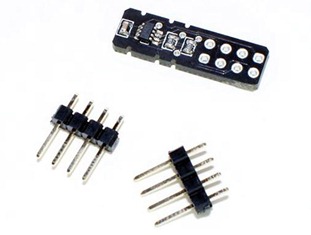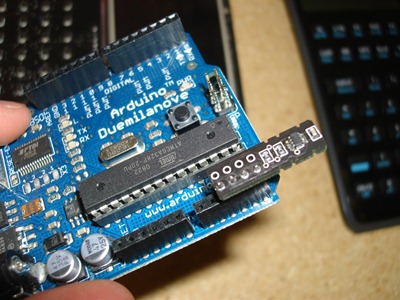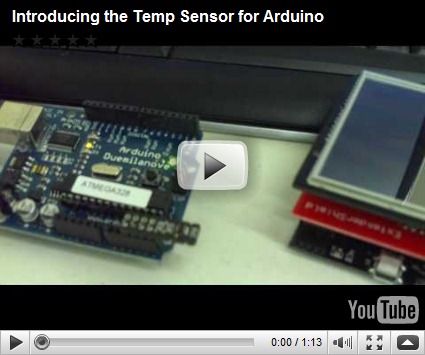The Temp Sensor marks the first (of many!) joint projects coming out of an engineering collaboration between Liquidware and Modern Device.
Long before I saw Al Gore’s Inconvenient Truth, I used to come home from school and watch Captain Planet and the Planeteers, and I like to think that I got my environmentalist outlook at quite an early age.
For those who missed out, the story actually focuses on the five young Planeteers who are literally out to save the world from the reckless damage humans on the environment. Only when the Planeteers couldn’t take care of business would they then summon Captain Planet himself.
The Planeteers came from 5 different continents, and each represented a natural “element”. Not quite elements like Uranium or Cobalt, but what are known as “classical elements”: Earth, Wind, Fire, and Water. The fifth planeteer, Ma-Ti, represented Heart, which I assume is a spiritual quality of living things that separates the organic from the inorganic.
So when I talked with Paul over at Modern Device about his Wind Sensor, or as some would say, thermal anenometer (try saying that three times fast!), we started to think about what other neat sensors we could make. That’s where the Planeteers come in. The jury is still out on an “Earth Sensor” (maybe an earthquake detector?), so after a Wind Sensor should come a Fire Sensor, a.k.a. Temp Sensor.
That’s where the Planeteers come in. The jury is still out on an “Earth Sensor” (maybe an earthquake detector?), so after a Wind Sensor should come a Fire Sensor, a.k.a. Temp Sensor. So I guess one could say that the Captain Planet group of sensors has arrived :-) While we’re on the topic of projects I did in the fourth grade, I’ll be starting a little biosphere project with some of the new sensors and an Arduino, and document the ideal conditions for plant growth in a New England winter. A totally different take on the concept of artificial life, might I add.
So I guess one could say that the Captain Planet group of sensors has arrived :-) While we’re on the topic of projects I did in the fourth grade, I’ll be starting a little biosphere project with some of the new sensors and an Arduino, and document the ideal conditions for plant growth in a New England winter. A totally different take on the concept of artificial life, might I add.
It has four pins: one for clock, one for data, +5V and ground, and it plugs right into the Arduino. The data pin is bidirectional, and communicates on the I2C protocol. Here’s a closeup of me holding the Arduino with the Temp Sensor mounted.

 And here’s a quick video demo of the Temp Sensor in action. I used a cold compress to cool it down, and my fingers to warm it back up, and everything came out on the serial monitor:
And here’s a quick video demo of the Temp Sensor in action. I used a cold compress to cool it down, and my fingers to warm it back up, and everything came out on the serial monitor:
I’ve added a new Arduino library to run the Temp Sensor directly as I did in this video, and I’ll do an “up and running” tutorial tomorrow, but this way, it’s easy to turn my Arduino into a thermometer instantly. Paul’s offering the Temp Sensor over at the Modern Device shop.
I’d be really interested in hearing some ideas for the Earth or “Heart” Sensor, or even some neat projects I could do as well – jhuynh at gmail…


4 comments:
Interesting concept, but with the sensor only inches from the board, will board temp influence the readings? Wouldn't a Dallas 1820 1-Wire interface be more useful? You can hang 6 different probes off one of them, they use parasitic power, only two wires, and the chips cost less than $2 each.
@rich - good point, I didn't really notice much heat coming from the board though. the concept was to have something you could literally plug into an arduino and run off a library in a couple minutes, rather than wiring out a chip. plus, it's got a remote probe feature...and I'm wondering if maybe a 4-pin extension cable might make this probe more interesting :)
I'd guess that you would need at least a 5 to 6 foot cable to be able to do anything useful with remote temp measurement. I'd hate to have to move my Arduino to the fridge to check how cold it gets inside at night - that would be a little tough on the electronics ;)
-Rich
the sensor comes with or without the headers, so it's easy to solder wire in... it's basically a really easy pick-it-up-and-go kinda sensor
Post a Comment